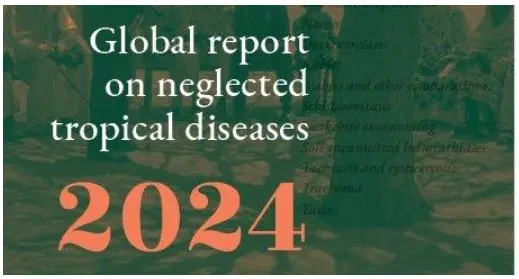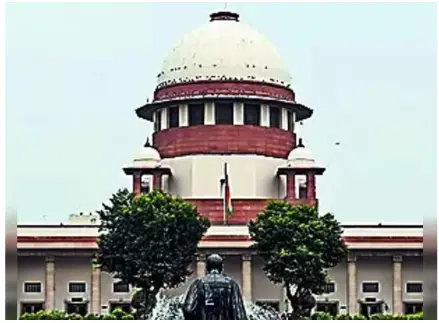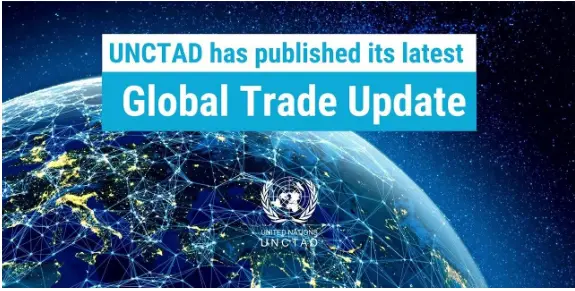Tuesday, 21st May 2024
India’s Climate Policy
In News: In the context of sustaining rapid economic growth amidst the global challenge of climate change, this article seeks to examine the development and fundamental aspects of India's Climate Policy.

Understanding the Evolution of India’s Climate Policy
Over-exploitation by the Developed World
- The excessive and unsustainable production and consumption patterns of developed countries have brought climate change to a crisis stage.
- Despite comprising only 16% of the global population, high-income nations like the US and EU account for 74% of excess resource use between 1970 and 2017.
- China has also exceeded its sustainability limit by 15% in resource overuse.
- In contrast, 58 countries, including India, Indonesia, Pakistan, Nigeria, and Bangladesh, have stayed within their sustainability limits over the same period.
Key Determinants of India’s Climate Policy
- Disturbance in the Seasonal Cycle
- India's civilization and economy have traditionally aligned with the seasonal cycle, but climate change has disrupted this harmony.
- Increasing unpredictability and negative consequences for nature and society have resulted from blurring distinctions between seasons.
- Limited Land Resources
- With a low human to land ratio of 0.0021 sq km in India, the nation must manage land and water resources effectively to cope with this limitation.
- Extreme Weather Events
- India ranks as the fifth most affected country by extreme weather events, according to the Germanwatch's Global Climate Risk Index 2020.
- Rising temperatures and shifting monsoon patterns could cost India 2.8% of its GDP by 2050, impacting the living conditions of half its population.
- India’s Resolution
- Despite historical cumulative emissions of less than 4% and low per capita emissions, India is committed to taking resolute domestic and international actions for environmental benefit.
The Essentials of India’s Climate Policy
- Vision
- India’s climate policy focuses on inclusive growth, poverty eradication, declining carbon budget, adherence to UNFCCC principles, and promoting climate-friendly lifestyles.
- Domestic Initiatives
- The National Action Plan on Climate Change (NAPCC) of 2008 and State Action Plans on Climate Change (SAPCCs) lay the groundwork for climate action across Indian states.
- Additional emphasis on confidence and convenient action is evident through initiatives like the Leadership Group for Industry Transition and the 'Lifestyle for Environment' movement.
- Global Engagement
- India supports a multilateral approach towards achieving net zero emissions by 2070, as reflected in its long-term low emissions development strategy.
- Despite having no binding mitigation obligations, India has successfully reduced the emission intensity of its GDP by 33% between 2005 and 2019.
- The country has made significant strides in renewable energy, with substantial increases in solar and wind energy capacities, achieving its target of 40% installed electric capacity from non-fossil fuels ahead of schedule.
- At the global level, India has played a crucial role in developing principles like CBDR-RC and established institutions such as the International Solar Alliance, the Coalition for Disaster Resilient Infrastructure, and the Global Biofuels Alliance.
Source: IE
Supreme Court Curbs ED's Arrest Authority in PMLA Cases
In News: The Supreme Court recently declared that once a special court acknowledges a chargesheet filed under the Prevention of Money Laundering Act (PMLA), the Enforcement Directorate (ED) no longer retains the power to arrest an accused.
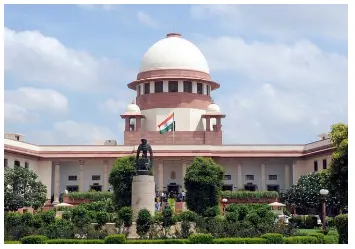
Recent Supreme Court Ruling on PMLA
- Background and Provisions: The Supreme Court delivered a ruling arising from an appeal against the Enforcement Directorate (ED), challenging a Punjab and Haryana High Court decision denying anticipatory bail.
- The case revolved around the eligibility of an accused to seek bail under the regular provisions of the Code of Criminal Procedure (CrPC) and whether such bail would need to meet the stringent conditions under Section 45 of the Prevention of Money Laundering Act (PMLA).
- Additionally, the court deliberated on whether an accused not arrested during the PMLA investigation would have to meet the rigorous bail conditions if they appeared in court after being summoned or issued a warrant for their non-appearance.
Supreme Court Observations
- Accused Appearing on Summons: The court ruled that if an accused appears before a designated special court pursuant to a summons, they cannot be deemed to be in custody. Therefore, they need not seek bail under the strict conditions of the PMLA.
- The ED must separately apply for custody of an accused after their appearance in court, presenting specific grounds necessitating custodial interrogation.
- This presumption of liberty is significant for safeguarding the fundamental right of personal liberty.
- Nature of Bonds/Sureties: The special court has the authority to direct the accused to provide a surety/guarantee (bonds) under Section 88 of the Code of Criminal Procedure. However, such surety does not equate to granting bail and does not require adherence to the stringent conditions of Section 45 of the PMLA.
- Graded Arrest Procedure: In case of failure to appear before the court despite summons, the special court may first issue a bailable warrant, allowing for bail. Subsequently, if the accused still does not appear, the court may issue a non-bailable warrant for arrest without bail.
- Arresting Non-Accused Parties: The ED retains the power to arrest individuals not named as accused in the initial PMLA complaint. However, to do so, it must follow the proper arrest procedures outlined in Section 19 of the PMLA.
Understanding PMLA
- Overview
- The Prevention of Money Laundering Act, 2002 (PMLA) aims to prevent money laundering and enable the confiscation of property derived from such activities, including drug trafficking, smuggling, and terrorism financing.
- Key Provisions
- Offences and Penalties: PMLA defines money laundering offences and imposes penalties, including rigorous imprisonment and fines.
- Attachment and Confiscation of Property: The Act allows for the attachment and confiscation of property involved in money laundering, overseen by an Adjudicating Authority.
- Reporting Requirements: Certain entities, such as banks and financial institutions, must maintain transaction records and report suspicious transactions to the Financial Intelligence Unit (FIU).
- Appellate Tribunal: Section 25 establishes an Appellate Tribunal to hear appeals against orders passed by the Adjudicating Authority.
- Recent Amendments
- Prevention of Money-laundering (Restoration of Confiscated Property) Amendment Rules, 2019: Introduces a new rule enabling the Special Court to publish notices in newspapers to call for legitimate claimants of attached/seized/frozen property.
- Prevention of Money Laundering (Maintenance of Records) Amendment Rules, 2023: Expands disclosure requirements for NGOs and clarifies the definition of "politically exposed persons" to align with FATF recommendations.
Concerns and Way Forward
- Broad Definition of Proceeds of Crime: There are debates over the broad interpretation of "proceeds of crime" in the PMLA, with concerns about its potential inclusion of legal financial transactions.
- Coverage of Numerous Offences: The Act includes various offences unrelated to its original purpose, raising questions about its focus.
- Arrest Procedures: Enforcement Directorate officers have faced criticism for violating constitutional and statutory provisions regarding the communication of arrest grounds.
To address these concerns, suggestions include refining the definition of "proceeds of crime," revising burden of proof mechanisms, establishing independent oversight bodies, promoting international cooperation, and leveraging technological advancements for detection and prevention.
|
UPSC Previous Year Questions Mains (2021) Q. Discuss how emerging technologies and globalisation contribute to money laundering. Elaborate measures to tackle the problem of money laundering both at national and international levels. |
Source: TH
India's Solid Waste Management
In News: The recent scrutiny by the Supreme Court regarding solid waste management in New Delhi highlights the urgent issue. With more than 3,800 tonnes of untreated waste accumulating in landfills, there are significant concerns for public health and environmental degradation in the national capital.
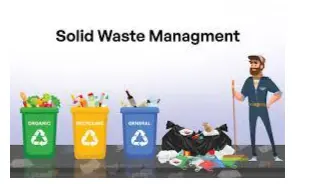
Challenges in India's Solid Waste Management
- Overview:
- Solid waste encompasses various types of waste generated from households, institutions, commercial establishments, and other sources.
- India contributes to a significant portion of global municipal waste generation.
- According to TERI, India generates 62 million tonnes of waste annually, with a large portion remaining untreated and ending up in landfills.
- Issues
- Ineffective Implementation of Regulations
- Many major cities struggle with inadequate waste bins and a lack of waste segregation at the source, leading to mixed waste entering landfills.
- Some areas lack regular waste collection services, resulting in waste buildup and littering.
- Challenges with Dumping Sites
- Waste processing plants in metro cities face land scarcity issues, exacerbating the problem of untreated waste.
- Illegal dumping and inadequate stakeholder coordination further complicate municipal waste management efforts.
- Insufficient Data Collection Mechanisms
- The absence of historical or regional data poses challenges for private entities in assessing the feasibility of waste management projects.
- Formal and Informal Waste Management Systems
- Municipal waste collection services often fall short in low-income communities, leading to reliance on the informal sector.
- Informal waste pickers face health risks and child labor concerns due to unhygienic conditions.
- Lack of Public Awareness
- There is a general lack of awareness among the public regarding proper waste management practices, resulting in littering and improper disposal habits.
- Ineffective Implementation of Regulations
Solid Waste Management Rules 2016
- These rules aim to improve waste management practices by focusing on waste segregation at the source and holding generators responsible for waste disposal.
- Key features include waste segregation into three streams, user fees for waste collection, and the responsibility of manufacturers to assist in establishing waste management systems.
Way Forward
- Role of Municipalities
- Cities should enhance waste processing capacities through composting and biogas generation, with stakeholder consultation.
- Waste-to-Energy Justification
- Refuse-derived fuel (RDF) can be used for power generation in waste-to-energy projects, utilizing non-recyclable dry waste.
- Decentralized Waste Processing
- Implementing micro-composting centers and dry waste collection centers in each ward can help manage wet and dry waste effectively.
- Integrated Approach
- Combining decentralized options with large-scale processing facilities ensures comprehensive waste treatment.
|
UPSC Previous Year Questions Prelims (2019) Q. As per the Solid Waste Management Rules, 2016 in India, which one of the following statements is correct? (a) Waste generator has to segregate waste into five categories. (b) The Rules are applicable to notified urban local bodies, notified towns and all industrial townships only (c) The Rules provide for exact and elaborate criteria for the identification of sites for landfills and waste processing facilities. (d) It is mandatory on the part of the waste generator that the waste generated in one district cannot be moved to another district. Ans: (c) Manis (2018) Q. What are the impediments in disposing of the huge quantities of discarded solid waste which are continuously being generated? How do we safely remove the toxic wastes that have been accumulating in our habitable environment? Manis (2017) Q. “To ensure effective implementation of policies addressing the water, sanitation and hygiene needs the identification of the beneficiary segments is to be synchronised with anticipated outcomes.” Examine the statement in the context of the WASH scheme. Manis (2016) Q. How could social influence and persuasion contribute to the success of Swachh Bharat Abhiyan? |
Source: TH
UK's Graduate Route Visa (GRV) Initiative
In News: British Prime Minister Rishi Sunak is contemplating alterations to the Graduate Route visa (GRV) scheme, with a proposal to restrict visas exclusively to high-achieving students. The proposed change is intended to diminish the influx of international students to the UK.

Popularity of the UK as a Study Destination Among Indians
- Overview of Indian Student Presence in the UK
- Indians represent the largest community of international students in the UK.
- Recent data indicates a substantial surge in student visas granted to Indians.
- Statistics on Student Visas
- According to the UK Home Office, student visas issued to Indians surged by 54% between June 2022 and June 2023.
- Since June 2019, the number of visas granted to Indian nationals has escalated seven-fold.
- Understanding the Graduate Route Visa (GRV) Scheme
- Introduced by the UK government in July 2021, the GRV scheme is tailored for international students.
- It permits graduates who have completed a degree at a UK higher education provider to stay in the UK for work or job hunting for up to two years post their studies.
- Those completing a PhD can extend their stay for up to three years.
- Notably, this visa does not mandate a job offer, offering graduates a chance to garner work experience in the UK.
- Eligibility Criteria for GRV
- The GRV is accessible to international students who have accomplished a degree at the undergraduate level or above at a Higher Education Provider with a compliant track record.
- Applicants must hold a valid Tier 4 or Student visa at the time of application.
- Motivations for Indian Students Seeking GRVs
- GRVs extend the stay in the UK post-education, facilitating employment opportunities and earning prospects.
- It serves as a pathway for settlement, particularly appealing to students from regions like Punjab.
- The GRV's allowance for family accompaniment under certain conditions adds to its popularity.
- Potential Impact of Restricting the GRV Scheme
- Experts foresee a decline in international student interest in studying in the UK if GRVs are restricted, owing to uncertainties regarding post-graduation prospects.
- Limiting GRVs to the best-performing students could impede the prospects of average students.
- The continuation of the GRV scheme is advocated as it aids UK universities in compensating for financial losses on the domestic front, as per an independent Migration Advisory Committee (MAC) study.
- Any curtailment of post-study opportunities could diminish the UK's appeal to overseas students, including Indians, positioning other countries like Canada and Australia as more stable options post-education.
- Considering Indians constitute a substantial portion of GRV holders, any alterations to the UK's GRV scheme would notably affect them.
Source: IE
Spices Board of India
In News: The Spices Board of India has addressed the matter of establishing limits for Ethylene Oxide (ETO) usage in spices with CODEX, the international food standards authority.
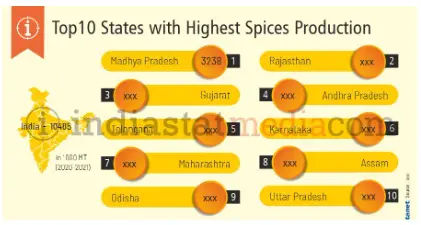
Overview of the Spices Board of India
- The Spices Board of India was established on 26th February 1987 under the Spices Board Act, 1986 through the amalgamation of the erstwhile Cardamom Board (1968) and Spices Export Promotion Council (1960).
- It is one of the five statutory Commodity Boards under the Department of Commerce.
- These Boards are mandated with the responsibility for the production, development, and export of tea, coffee, rubber, spices, and tobacco.
- The Spices Board specifically focuses on the export promotion of the 52 scheduled spices and the development of cardamom.
- It serves as the primary organization for the development and global promotion of Indian spices.
- Acting as an international intermediary, the Board facilitates communication between Indian exporters and importers worldwide.
Issue of Ethylene Oxide (ETO)
- Ethylene Oxide (ETO) is a chemical utilized as a sterilizing agent in spices, but its excessive use is deemed carcinogenic.
- Despite ongoing efforts to prevent ETO contamination, the sample failure rate for Indian spice exports remains below 1% in major markets.
- Currently, CODEX has not established a specific limit for ETO usage, and there's a lack of standardized testing protocols for ETO.
- India has engaged with the CODEX committee to advocate for the establishment of limits on ETO usage, recognizing that different countries have varying thresholds.
- The Spices Board has issued guidelines for exporters aimed at preventing ETO contamination and ensuring market safety.
- It recommends against the use of ETO as a sterilizing agent for spices and proposes alternatives such as steam sterilization and irradiation.
- Concerns regarding the quality of certain Indian spices have been raised by other countries like the US, New Zealand, and Australia, prompting them to assess whether further action is necessary.
|
UPSC Previous Year Questions Prelims (2018) Q. The staple commodities of export by the English East India Company from Bengal in the middle of the 18th century were: (a) Raw cotton, oil-seeds and opium (b) Sugar, salt, zinc and lead (c) Copper, silver, gold, spices and tea (d) Cotton, silk, saltpetre and opium Ans: (d) Prelims (2009) Q. In making the saffron spice, which one of the following parts of the plant is used? (a) Leaf (b) Petal (c) Sepal (d) Stigma Ans: (d) |
Source: BL
Sea Anemone Bleaching
In News: For the first time, researchers investigating Sea Anemones (Actiniaria) in the Lakshadweep group of islands have documented a significant bleaching event affecting the anemones near Agatti Island. This marks the initial observation of sea anemone bleaching in the Lakshadweep islands.

Understanding Sea Anemone Bleaching
- Sea anemone bleaching occurs when these creatures lose their vibrant colors and become white or pale due to the expulsion of symbiotic photosynthetic algae.
- Environmental stressors such as increasing water temperatures, pollution, or shifts in ocean chemistry can trigger this phenomenon.
- Bleaching deprives sea anemones of their primary energy source, making them more vulnerable to diseases and resulting in higher mortality rates.
Characteristics and Habitat of Sea Anemones
- Sea anemones are aquatic animals characterized by soft bodies and the ability to sting.
- They belong to the Cnidaria phylum family and are commonly found in ocean waters, particularly in coastal tropical regions.
- Sea anemones often form close associations with corals and live rocks, and they establish symbiotic relationships with clownfish, offering protection in exchange for food from the clownfish's meals.
Ecological Importance of Sea Anemones
- Sea anemones play crucial biogeochemical roles in benthic ecosystems, which represent the lowest ecological zone in a water body and typically involve sediments at the seafloor.
Geographical Information
- Agatti Island is situated approximately 459 km (248 nautical miles) away from Kochi, Kerala.
- It is positioned to the west of Kavaratti Island.
Source: TH
Red Panda
In News: A red panda was recently spotted on camera in the Eaglenest Wildlife Sanctuary (EWS), situated within the Singchung subdivision of the West Kameng district, Arunachal Pradesh.

About Red Panda
- Overview of the Red Panda
- Red pandas are primarily herbivorous animals.
- They utilize their long, bushy tails for balance and insulation during winter months, likely for warmth.
- This shy, solitary, and arboreal species is considered an indicator of ecological change.
- Renowned for their cute appearance and adorable defense stance, red pandas are roughly the size of a house cat.
- Distribution
- Red pandas inhabit mountainous forests in Bhutan, China, India, Myanmar, and Nepal.
- Nearly 50% of their habitat is concentrated in the Eastern Himalayas.
- Threats
- Red panda habitat faces decline due to the loss of nesting trees and bamboo, particularly in the Eastern Himalayas.
- This habitat loss contributes to a decline in red panda populations across much of their range.
- Conservation Status
- Red pandas are classified as Endangered on the IUCN Red List.
- They are listed under Appendix I of CITES and are categorized as Schedule I under the Wildlife Protection Act 1972.
Key Facts about Eaglenest Wildlife Sanctuary
- Eaglenest Wildlife Sanctuary is a protected area located in the Himalayan foothills of the West Kameng District, Arunachal Pradesh, India.
- It shares borders with the Sessa Orchid Sanctuary to the northeast and the Pakhui Tiger Reserve across the Kameng River to the east.
- Situated within the biodiversity hotspot of the Eastern Himalayas, the sanctuary boasts a rich avian diversity, with over 500 bird species.
- The altitude within the sanctuary varies significantly, ranging from 500 meters (1,640 feet) to 3,250 meters (10,663 feet).
- Additionally, Eaglenest Wildlife Sanctuary is part of the Kameng Elephant Reserve.
Source: NET
Lunar Polar Exploration Mission (LUPEX)
In News: According to a recent interview with the Japan Aerospace Exploration Agency (JAXA), the collaborative moon mission between India and Japan, known as the Lunar Polar Exploration Mission (LUPEX), is expected to launch in the coming years.
Overview of the Lunar Polar Exploration Mission (LUPEX)
- LUPEX is a collaborative effort between ISRO and the Japan Aerospace Exploration Agency (JAXA).
- The mission is slated for launch in 2025 and will be carried out using Japan's H3 rocket.
- Its primary objective is to explore the moon's southern polar region to investigate the presence of water and other elements, potentially in the form of surface ice.
- LUPEX aims to demonstrate innovative surface exploration technologies, particularly focusing on vehicular transport and survival during lunar nights.
- The mission comprises both a lander and a rover, with JAXA handling the development and operation of the rover, while ISRO is responsible for the lander.
- The rover will autonomously traverse the lunar surface to search for water-rich areas and collect soil samples using a drill.
- Data will be gathered by analyzing the collected samples with onboard observation equipment.
- Equipped with instruments for measuring water content, drilling, sampling, and advanced driving systems and batteries, the rover will feature world-first and world-leading technologies.
- Additionally, the rover will carry instruments from ISRO, JAXA, NASA, and the European Space Agency (ESA).
Source: TP
Summer Solstice
In News: The summer solstice signifies the commencement of astronomical summer in the Northern Hemisphere and represents the day with the greatest amount of daylight throughout the year.
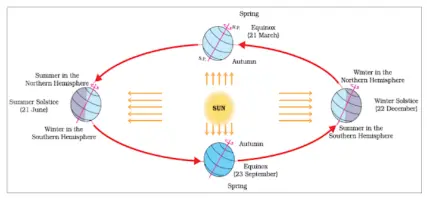
Understanding the Summer Solstice
- The term "Solstice" originates from Latin, meaning "sun stands still."
- It is an annual astronomical event marking the longest day of the year.
- During the summer solstice, the Northern Hemisphere tilts toward the sun, resulting in maximum exposure to its rays.
- This phenomenon occurs because the Earth's axis, around which it spins, is tilted, causing the North Pole to face the Sun while the South Pole faces away from it.
- The Earth's axis is typically tilted at 23.5 degrees with respect to the Sun, passing through the center of the Earth from top to bottom.
Events during the Solstice
- The summer solstice results in the Earth receiving a greater amount of energy from the Sun.
- It occurs annually on either June 20 or June 21 in the Northern Hemisphere, and on December 21 or December 22 in the Southern Hemisphere.
- The variation in dates is due to the Gregorian calendar's 365-day count, with an extra leap day added every four years in February.
- The amount of sunlight received during the summer solstice varies based on the latitude of a location.
- Areas further north from the equator receive more light during this time. For instance, at the Arctic Circle, the sun does not set during the solstice.
Source: LS
New Caledonia
In News: Amid ongoing and deadly unrest, French security forces are intensifying their efforts to restore order in New Caledonia.
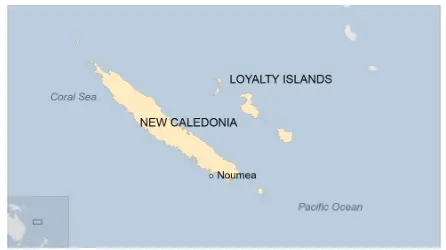
About New Caledonia
- Overview of New Caledonia
- New Caledonia is a French overseas collectivity enjoying significant autonomy as per the terms of the 1998 Nouméa Accord.
- Situated in the southwestern Pacific Ocean, it lies approximately 900 miles (1,500 km) east of Australia.
- Unlike many Pacific islands formed by recent volcanic activity, New Caledonia is an ancient fragment of the Gondwana supercontinent.
- The territory encompasses several islands, including Grande Terre (the main island), the Loyalty Islands, the Belep archipelago, the Isle of Pines, and other remote islands.
- The capital city is Nouméa, located on Grande Terre.
- Population
- New Caledonia has a population of just over 270,000 people as of 2019.
- Around 39 percent of the population identifies as indigenous ('Kanak').
- The rest of the population consists of Caledonians of European, Polynesian, and other origins, including Vietnamese, Indonesian, and Algerian.
- New Caledonians hold French and European citizenship, allowing them to reside anywhere in France and participate in territorial and French national elections.
- The Head of State is the President of the French Republic, represented in New Caledonia by a High Commissioner.
- Political Status and Governance
- As one of the European Union’s Overseas Countries and Territories (OCTs), New Caledonia is not part of the EU, the Eurozone, or the Schengen area.
- The Nouméa Accord (1998) and subsequent Organic Law (March 1999) provide the constitutional framework for governance in New Caledonia.
- The Accord outlines the territory's relations with France and establishes a timetable for assuming responsibility for most areas of government.
- International Engagement
- New Caledonia hosts the Secretariat of the Pacific Community, founded in 1947 by Australia, France, the Netherlands, New Zealand, the United Kingdom, and the United States to promote economic and social stability in the South Pacific countries.
Source: TOI
Overhauling India's Higher Education System
In News: A recent discussion revolves around the politicization of higher education in India and emphasizes the urgent need for substantial reforms.
Current Status of the Higher Education System in India
- Student Enrolment
- As per the All India Survey of Higher Education (AISHE) 2021-22, the enrolment in higher education institutes stands at 4.33 crore, indicating a significant increase from previous years.
- The number of women enrolled has risen to 2.07 crore, marking a 32% jump since 2014-15.
- Notably, the proportion of women enrolled is highest at the postgraduate level (55.4%).
- Gross Enrolment Ratio (GER) and Gender Parity Index (GPI)
- The estimated GER for the age group 18-23 years is 28.4% in India.
- The GPI stands at 1.01 at the all-India level, showcasing gender parity.
- Discipline-wise Enrolment
- Bachelor of Arts (BA) programs dominate undergraduate enrolment (34.2%), followed by science, commerce, and engineering.
- Social science stream leads postgraduate enrolment, with 10.8 lakh students enrolled.
- Engineering has the highest enrolment at the PhD level, followed by science and social sciences.
- Primacy of Government Institutions
- Despite comprising only 58.6% of all universities, government universities attract 73.7% of all students.
- State public universities hold the largest share of enrollment among government-owned universities, accounting for around 31%.
Key Government Initiatives Related to Higher Education
- National Education Policy (NEP) 2020
- Aims to revamp the education system, emphasizing multidisciplinary learning, skill development, and research and innovation.
- Proposes increasing the Gross Enrolment Ratio to 50% by 2035.
- Institutions of Eminence (IoE) Scheme
- Launched in 2018, granting complete autonomy to 20 selected institutions.
- National Credit Framework
- Integrates training and skill development into the education system, with credits stored digitally for accessibility.
- Revamped Accreditation and Ranking Systems
- Initiatives like NIRF and revamped NAAC ensure quality standards among institutions.
- Digital Initiatives
- Platforms like SWAYAM and the National Digital Library of India offer online courses and educational resources.
- Study in India Program
- Aims to attract international students to study in India through scholarships and streamlined admission processes.
- Foreign Institutions in India
- Regulations allowing foreign universities to establish branch campuses in India, enhancing international collaboration.
- SHE under INSPIRE
- Offers scholarships to attract students to pursue basic and natural sciences at undergraduate and postgraduate levels.
Current Major Challenges in the Indian Higher Education System
- Inequitable Access and Low GER
- Persistent disparities in access based on socio-economic background, gender, and geography.
- GER, while improving, remains below the global average.
- Politicization and Lack of Autonomy
- Concerns about political interference in institutions' affairs, hindering autonomy and innovation.
- Limited Funding
- Reduced budget allocations and low investment in research and development compared to global standards.
- Shortage of Faculty and Brain Drain
- Vacant teaching positions and talent migration to other countries or sectors due to better opportunities.
- Inadequate Industry-Academia Collaboration
- Lack of effective partnerships leading to a skill gap and unmet industry demands.
- Uneven Regional Development
- Disparities in the quality and accessibility of higher education across different states and regions.
Measures to Revamp Higher Education System in India
- Redefining the Role of Universities
- Shifting focus to practical skill development, social responsibility, and civic engagement.
- Transforming institutions into skill generators rather than degree issuers.
- Open Education Resources (OER) Initiatives
- Enhancing access to educational resources through platforms like the National Digital Library of India.
- Entrepreneurship and Innovation Centers
- Establishing centers to foster innovation and support student entrepreneurship.
- Transnational Education Partnerships
- Promoting collaborations with international universities to enhance global exposure and competitiveness.
- Dual Study Programs
- Implementing programs combining theoretical learning with practical training.
- Competency-based Credentialing and Blockchain Certificates
- Adopting systems to recognize and validate skills acquired through diverse learning pathways, leveraging blockchain technology for transparency and trust.
|
UPSC Previous Year Questions Prelims (2012) Q. Which of the following provisions of the Constitution does India have a bearing on Education?
Select the correct answer using the codes given below: (a) 1 and 2 only (b) 3, 4 and 5 only (c) 1, 2 and 5 only (d) 1, 2, 3, 4 and 5 Ans- (d) Mains (2020) Q1. How have digital initiatives in India contributed to the functioning of the education system in the country? Elaborate on your answer. Mains (2021) Q2. Discuss the main objectives of Population Education and point out the measures to achieve them in India in detail. |
Source: TH
Share the article
Edukemy’s Current Affairs Quiz is published with multiple choice questions for UPSC exams
MCQ
Get Latest Updates on Offers, Event dates, and free Mentorship sessions.

Get in touch with our Expert Academic Counsellors 👋
FAQs
UPSC Daily Current Affairs focuses on learning current events on a daily basis. An aspirant needs to study regular and updated information about current events, news, and relevant topics that are important for UPSC aspirants. It covers national and international affairs, government policies, socio-economic issues, science and technology advancements, and more.
UPSC Daily Current Affairs provides aspirants with a concise and comprehensive overview of the latest happenings and developments across various fields. It helps aspirants stay updated with current affairs and provides them with valuable insights and analysis, which are essential for answering questions in the UPSC examinations. It enhances their knowledge, analytical skills, and ability to connect current affairs with the UPSC syllabus.
UPSC Daily Current Affairs covers a wide range of topics, including politics, economics, science and technology, environment, social issues, governance, international relations, and more. It offers news summaries, in-depth analyses, editorials, opinion pieces, and relevant study materials. It also provides practice questions and quizzes to help aspirants test their understanding of current affairs.
Edukemy's UPSC Daily Current Affairs can be accessed through:
- UPSC Daily Current Affairs can be accessed through Current Affairs tab at the top of the Main Page of Edukemy.
- Edukemy Mobile app: The Daily Current Affairs can also be access through Edukemy Mobile App.
- Social media: Follow Edukemy’s official social media accounts or pages that provide UPSC Daily Current Affairs updates, including Facebook, Twitter, or Telegram channels.

